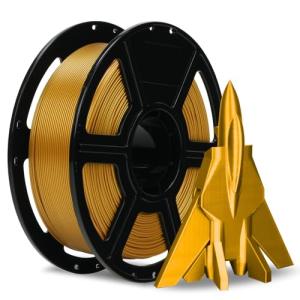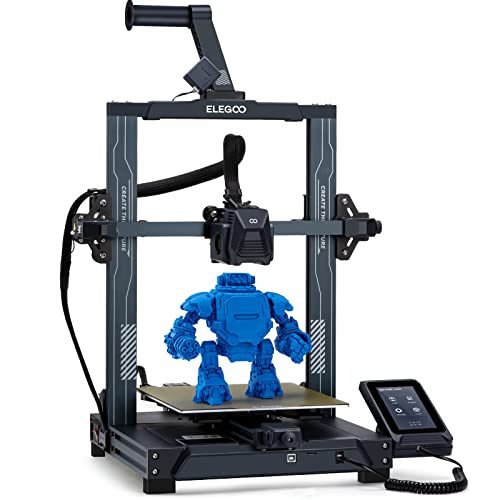Choosing the right 3D printer filament can make a huge difference in your projects. Let’s dive into the top filament types you should consider for your next creation.
1. PLA (Polylactic Acid) - This is the go-to choice for many 3D printing enthusiasts. It’s super easy to use, making it perfect for beginners. PLA is made from renewable resources like corn starch, which is a nice eco-friendly bonus. It’s available in loads of colors and finishes, and it prints with minimal warping, so your prints come out looking sharp every time.
2. ABS (Acrylonitrile Butadiene Styrene) - If you need something durable, ABS is the way to go. This filament is tough and can handle higher temperatures, which makes it ideal for functional parts or items that might be exposed to heat. Just keep in mind that it can be a bit trickier to print with compared to PLA since it can warp and needs a heated bed for best results.
3. PETG (Polyethylene Terephthalate Glycol) - PETG combines the best features of PLA and ABS. It’s strong, flexible, and easy to print. Plus, it has a bit of a shine to it, giving your prints a sleek look. It’s also food-safe, making it a solid choice for containers or anything that might touch food. If you want a reliable filament that still looks great, PETG is a fantastic option.
When you’re ready to pick your 3D printer filament, think about what you’ll be making. Each type has its benefits, so choose the one that fits your project best. Happy printing!
How to Pick the Right Filament
Choosing the right 3D printer filament can make a huge difference in your printing experience. The type of filament you pick affects not only the quality of your prints but also how easy the whole process is. Let’s break down the main factors to consider when selecting 3D printer filament.
First off, think about what you want to create. Are you making sturdy parts, fun decorations, or something that needs to flex? Different filaments serve different purposes. For example:
Next, consider the temperature requirements. Some filaments need a heated bed or specific temperature settings. If you don’t want to mess around with too much setup, stick to those filaments that are compatible with your printer’s settings. It’ll save you time and headaches.
Finally, don’t forget to think about the finish. Some filaments can give you a shiny or matte look right out of the printer, while others might need sanding or painting afterward. If the final appearance is important to you, do a little research before buying. This way, your prints will turn out just the way you envisioned!
QIDI MAX3 3D Printer: High-Speed Large Format, Auto-Leveling
Experience Next-Level 3D Printing with the QIDI MAX3: Impeccable High-Speed Large Format and Auto-Leveling Capability for Unmatched Precision
Product information
$779.00 $729.00
Product Review Score
4.47 out of 5 stars
47 reviewsProduct links
Tips for Storing and Handling Filament
When it comes to 3D printer filament, proper storage and handling can make a huge difference in your printing results. Start by keeping your filament in a cool, dry place away from direct sunlight. UV rays can break down the plastic, affecting its quality. If you can store it in a sealed bag with desiccant packs, that’s even better. This will keep moisture at bay and help maintain the filament’s performance.
Temperature changes can also impact your filament. Try to avoid storing it in places where it might get too hot or too cold, like garages or attics. Ideally, keep it at room temperature. If you have multiple spools, consider organizing them by type and color. This makes it a breeze to find the right one for your project and minimizes the chance of mixing them up.
When you’re ready to print, handle your 3D printer filament with care. Make sure your hands are clean and dry to prevent oils and dirt from getting on the filament. A quick run through a filament guide can also help, especially for materials that tend to tangle. Be consistent with the feed path on your printer to avoid jams and other printing issues.
If you notice any signs of moisture or brittleness, it might be time to dry out your filament. There are filament dryers available, or you can pop it in an oven at a low temperature—just keep an eye on it! By actively maintaining your 3D printer filament, you'll ensure smoother prints and happy 3D printing sessions.
Flashforge 1.75mm Metallic Bright Gold PETG Filament
Bring your 3D creations to life with this shiny gold filament that's perfect for adding a touch of luxury
Product information
$21.99
Product Review Score
4.83 out of 5 stars
107 reviewsProduct links
Getting the Best Print Quality with Filament
Getting the best print quality starts with choosing the right 3D printer filament. Not all filaments are created equal, and the type you pick can really make a difference. For example, PLA is super easy to use and great for beginners. It gives you that shiny finish and vibrant colors you might be looking for.
If you want something a bit tougher, ABS might be your go-to choice. It’s strong and heat-resistant, but be ready for a little warping. Just make sure you use a heated bed to reduce that issue. If you need flexibility, then TPU is a fantastic option. It can bend without breaking, making it perfect for items like phone cases or wearables.
Don't forget about storage either. Keep your filaments in a dry place to prevent moisture absorption. Humidity can ruin your prints, leading to poor layer adhesion and a messy finish. Investing in a proper storage solution can save you a ton of headaches.
Lastly, experiment with different settings for each type of 3D printer filament you use. Adjusting the temperature, speed, and layer height can help you unlock the full potential of your filament. Every material has its sweet spot, so play around a bit to get the best results!





